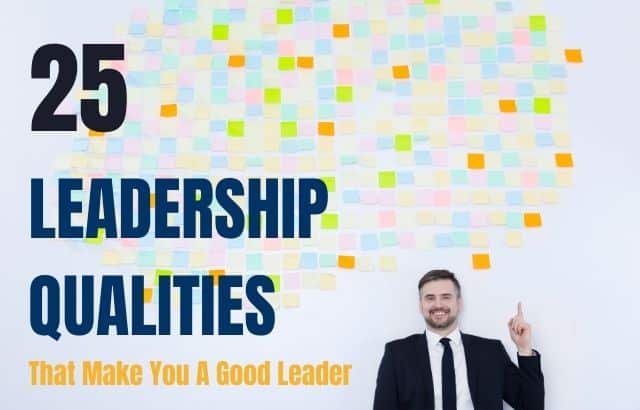Leadership is a complex and multifaceted trait that requires a wide range of skills and qualities to succeed. While some leadership qualities, such as integrity, communication skills, and the ability to inspire and motivate others, are well-known and highly valued, there are certain rare leadership qualities that are often overlooked, but can be highly effective in certain situations.
“Like a leading light, a good leader guides folks through the tempest of uncertainty and lightens the way to a brighter future”
25 leadership qualities

In this article, 25 leadership qualities are being explored that make you a good leader.
1.Visionary: A good leader has a clear and compelling vision for the future and communicates it effectively to their team.
2.Integrity: A good leader is truthful. A good leader is dependable and has righteous and upright principles.
3.Humility: A good leader is humble and open to feedback, willing to admit their mistakes and learn from them.
4.Warmth & Insightful: A good leader is able to understand and relate to the needs and feelings of others, and takes them into consideration in decision-making.
5.Decisiveness: A good leader is able to make tough decisions quickly and confidently, using sound judgment and analysis.
6.Accountability: A good leader takes responsibility for their actions and decisions, and holds themselves and their team accountable for results.
Many leaders are willing to take credit when things go well, but are quick to pass the blame when things go wrong. A rare quality among leaders is unwavering accountability – taking full responsibility for both successes and failures, and using those experiences to learn and grow as a leader.
7.Creativity: A good leader is able to think outside the box and generate innovative ideas and solutions.
8.Adaptability: A good leader is able to adapt to changing circumstances and make necessary adjustments to keep their team on track.
9.Resilience: A good leader is able to persevere through challenges and setbacks, and bounce back from adversity.
10.Empowerment: A good leader is able to empower and motivate their team to achieve their full potential.
11.Communication: A good leader is an effective communicator, able to listen actively and communicate clearly and persuasively.
12.Positive Attitude: Impact of positive thinking on life and career can be learned from a good leader. A good leader maintains a positive attitude even in difficult situations, and inspires their team to do the same.
13.Emotional Intelligence: A good leader is able to manage their own emotions and those of others, and use emotional intelligence to build strong relationships.
14.Strategic Thinking: A good leader is able to think strategically and develop plans and strategies that align with their vision and goals.
15.Team Building: A good leader is able to build strong, cohesive teams and foster collaboration and cooperation among team members.
16.Delegation: A good leader is able to delegate effectively, assigning tasks and responsibilities to team members based on their strengths and abilities.
17.Coaching: A good leader is able to coach and mentor team members, helping them to develop their skills and grow in their roles.
18.Active Listening: A good leader is an active listener, able to give their full attention to others and understand their perspectives.
19.Self-Awareness: A good leader is self-aware, able to recognize their own strengths and weaknesses and work on improving themselves.
20.Strategic Planning: A good leader is able to develop and implement effective strategic plans that align with their vision and goals.
21.Decision Making: A good leader is able to make informed, effective decisions based on analysis and input from others.
22.Time Management: A good leader is able to manage their time effectively and prioritize tasks to maximize productivity.
23.Radical empathy: Empathy is a crucial trait for any leader, but radical empathy takes it to the next level. Radical empathy involves not only understanding and sharing the feelings of others, but also using that understanding to shape your actions and decisions as a leader.
Leaders with radical empathy go beyond simply recognizing the emotions of others, they actively seek to address those emotions in ways that make a positive impact on the people they lead.
24. Generosity Of Spirit: A rare leadership quality that can be highly effective is generosity of spirit. Leaders with this trait are genuinely invested in the success and well-being of their team members, and are willing to go out of their way to support and encourage them.
25.Comfort with ambiguity: In a rapidly changing and complex world, leaders who are comfortable with ambiguity and uncertainty are highly valuable. These leaders are able to make decisions and take action in the face of incomplete information, and are not deterred by the unknown.
Final Thoughts

The mark of a true leader is not in how they lead in times of comfort and ease, but in how they rise to the occasion in times of adversity and crisis.










